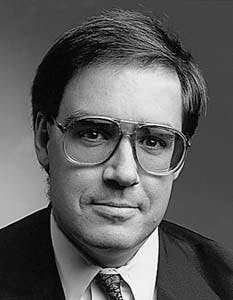Petrochemical producers gain advantage with novel business strategies
Tad Glauthier, Harold Kalkstein, Robert Williamson
Boston Consulting Group San Francisco
After 50 years of gradual change in the petrochemicals industry, the rules of the game are rapidly being rewritten. Parity among competitors has made strategies based on minimizing costs increasingly ineffectual.
Some competitors are now finding new business approaches that may allow them to leave others behind.
Although the recent upturn in the chemical cycle has brought with it high utilization rates and encouraging financial returns for manufacturers of both petrochemicals and other chemicals, chemical managers need to be aware that the next downturn may erase these gains. The industry has experienced periods of poor financial performance in the past, and there is little reason to expect that the future will bring improvements.
The current cyclical upswing comes after a period (1975-1985) in which chemical companies destroyed significant shareholder value. Using a group of seven U.S. petrochemical companies as an index, Boston Consulting Group (BCG) found that average cash flow return on investment (Cfroi), a measure that closely parallels shareholder returns, dropped below the true cost of capital during this 10-year period, as it did in the early 1990s (Fig. 1 [34334 bytes]).
In 1995, the industry began to create value again for its shareholders, but it may be in danger of returning to value destruction. The oil industry-a possible analog-has been destroying value since the late 1960s with cyclical, albeit unsuccessful, swings toward recovery.
The profitability of the chemical industry as a whole, in fact, is becoming increasingly variable. Whereas returns on net assets fluctuated within a 5% band from the 1950s through the 1970s, the 1980s and 1990s have seen fluctuations within a 9% band. So while chemicals have recovered for the present, another upturn in the cost of capital combined with weakening returns would plunge the industry back into significant value destruction.
The outlook is no more sanguine for individual chemical industry segments or geographic regions. Petrochemical, specialty, inorganics, and broad chemical companies in the U.S. all have been party to the trend described.
Meanwhile, European chemical companies have been suffering from Cfrois that have not surpassed the indexed cost of capital, even during the last decade of stronger chemical performance. Asset growth in Germany has declined since the late 1980s, while asset intensity (a measure of how much capital a company needs to have invested in assets in order to earn a certain amount of revenue) has increased.
This bleak landscape, however, has a few bright spots. Some chemical segments and companies are pioneering strategies that incorporate entirely new ways of approaching the traditional business levers.
Industrial gas manufacturers, for example, have completely redefined business boundaries over the past 15 years. Their new approach to serving customers, discussed later in this article, has raised higher barriers to competitive entry and helped business in North America grow twice as fast as gross domestic product.
These activities may serve as templates for petrochemical managers currently trapped in a competitive stalemate.
Prevailing strategies
Until recently, petrochemical companies have generally pursued strategies focused on optimizing particular portions of the value chain. For the purposes of this article, it is helpful to think of the value chain in terms of four main business segments: feedstocks, products, production processes, and service/distribution (Fig. 2 [37612 bytes]).
Since most chemical managers view these segments similarly, strategies for optimizing them tend to be uniform across the industry. For example, the 1980s saw industry-wide cost cutting and re-engineering efforts, followed in the 1990s by companies focusing on their core businesses.
Feedstocks
Strategies involving the feedstock portion of the value chain typically have focused on obtaining a feedstock and/or energy cost advantage by locating plants near feedstock sources or employing long-term purchase agreements.
Union Carbide Corp., for example, signed an agreement in 1994 with Kuwait National Petroleum Co. to purchase ethane at a much lower price than it could obtain on the open market. Such agreements, however, can leave the chemical producer vulnerable to opportunistic renegotiation of the supply agreement by the supplier, should market conditions change.
Products
Product development strategies typically have focused on new product discovery. Many petrochemical companies continue to search for another holy grail, such as the next polyethylene terephthalate, and they spend heavily on research and development (R&D) so as not to be left behind.
With each new discovery, however, companies must invest incrementally more in R&D for a lower return as new, smaller product niches often are carved out of existing product markets. Whereas the market potential of a major discovery in the 1930s or 1940s (polyvinyl chloride, polystyrene) ranged from $10 billion to $25 billion in 1995 sales, major product discoveries of the 1960s and 1970s (polycarbonate, polyphenylene sulfide) had 1995 annual sales of less than $1 billion.
Production processes
Strategies centering on the production process have focused on cutting costs and increasing efficiency. Petrochemical manufacturers have attempted to maximize benefits of scale by continually increasing the size of world-scale plants.
They also have sought to optimize production through the use of new catalyst technologies. Advances in catalyst technology, however, have not come cheap. There is some doubt that the industry will ever recover the development costs for metallocene catalysts.
Another method of optimizing production has been to focus on core businesses, a strategy that has enjoyed increasing popularity among U.S. chemical companies in the 1990s. Companies sell off noncore businesses, and thereby gain additional capital to invest in the core.
Amoco Chemical Co.'s aggressive consolidation of global purified terephthalic acid (PTA) supply and the Montell Polyolefins joint venture that dominates polypropylene are two examples of this strategy carried to an extreme.
This strategy has been successful to date. In BCG's analysis of petrochemical manufacturers in the U.S., it was determined that companies that focus on a few core products have higher profitability than those that compete across multiple, diverse product lines. Specifically, as a company's market share for a monomer or polymer doubles, its margins improve by about 10%.
This improved profitability provides more capital to invest in R&D, generally giving companies with greater scale superior production technology. This creates a virtual cycle in which profitability, R&D, and market share grow in step with one another (Fig. 3 [35522 bytes]). This strategy, however, is experiencing diminishing returns as competitors adopt it across the board.
Service/distribution
The fourth set of prevailing strategies is based on distribution and customer service. On the distribution side, the 1990s have been characterized by increasing globalization of chemical businesses. Producers are focusing the international growth efforts in emerging markets, especially in the Asia/Pacific region and Latin America.
Early entry into new geographic and product markets enables competitors to lock up market share and create barriers to entry. BASF, for example, achieved a No. 3 position in Western Europe in polyoxymethylene by building on its existing distribution channels and investing via joint venture to share risk.
On the customer side, producers have attempted to carve out niches by focusing on existing customer needs. As they do so, product segments become increasingly smaller, and the incremental return on investment for new product development decreases.
Other strategies
As creating value becomes increasingly difficult, some companies have resorted to "harvesting" assets. (Harvesting refers to the practice of running older plants full out while minimizing upkeep expenditures.) Old, outdated plants may not be highly efficient, but with a fully depreciated accounting value, they can have high returns.
Many petrochemical companies believe that rigorous execution of these traditional strategies will be enough to keep them ahead of their competition. Unfortunately, as chemical producers move toward cost parity with their competitors, they will be increasingly hard-pressed to differentiate themselves on the basis of the prevailing strategies for two reasons.
First, competitive advantages obtained through the use of traditional strategies can be of very short duration. The diminishing returns from technological innovations and the threat of opportunistic renegotiation inherent in long-term feedstock supply agreements are just two examples.
Second, not all companies are able to make full use of the traditional strategies. While Amoco, for example, is able to realize substantial benefits of scale and share in PTA, many companies do not have the resources to achieve such a favorable market position.
Not all of these strategies are directly applicable to petrochemical companies, but they serve as broad examples of possible strategies.
Emerging strategies
Some chemical companies have managed to avoid a competitive stalemate by developing strategies that have fundamentally changed the way the game is played. Granted, it will still be necessary to pursue maximum efficiency, but the emerging strategies will allow the companies that adopt them to differentiate themselves further than they otherwise could have done (Table 1 [57958 bytes]).
Feedstocks
Rather than continuing to compete on feedstock price, some producers are looking to differentiate themselves in other ways. For example, some customers are willing to pay a premium for biodegradability.
In l989, Henkel KGaA began to replace the petroleum-based foam boosters it uses to produce detergents and soaps. The replacement feeds were alkylpolyglycosides, a renewable, biodegradable feedstock based on corn and palm oils.
One result of this replacement was improved washing performance of the products made from the new feedstock.
Products
As the discovery of new technologies becomes increasingly expensive and brings diminishing incremental returns, companies are hard-pressed to recover their development costs. Some companies now realize that they are better off pursuing technology partnerships or licensing technologies from independent research firms.
Several European petrochemical concerns, for example, are considering investing in joint R&D facilities as a way of increasing their competitiveness.
Production processes
Some chemical companies have developed a strategy of descaling assets; industrial gas manufacturers are a prime example. While traditional strategies have pointed toward the cost efficiency of a gargantuan world-scale plant, L'Air Liquide has benefited from on-site production limits that have decreased the initial investment in gas production by a factor of ten over the last 60 years.
When descaling is not possible, as has been the case for most petrochemicals, some competitors have creatively turned to the "condominium concept." This involves several players investing jointly in a world-scale facility.
Service/distribution
Some companies use technology and know-how from developed markets to facilitate entry into new markets, while using new markets as a source of learning. International Flavors & Fragrances (IFF) has been able to leverage scale to reap multiple rewards from global expansion.
IFF maintains a library of thousands of flavor and fragrance compounds. The library enables IFF to make the same compounding capabilities available to sophisticated global customers and smaller emerging local competitors. It can leverage a global base to enter new markets, and these new markets, in turn, provide the compounding library with new fragrances and ethnic flavors.
In a similar way, petrochemical companies should examine what core capabilities they are able to build on as they expand internationally.
Strategic combinations
Industrial gas producers have combined the service and technology levers in a revolutionary way to bring themselves closer to the customer.
These producers began applying existing production technologies to meet customer needs in the 1980s. They moved production to the customer site and ultimately developed a detailed knowledge of customer segment processes. As a consequence, the basis of competition shifted from products to customer segments.
Their new customer knowledge also has enabled gas producers to broaden their product offerings to include related services, such as pipeline installation and maintenance, and small-scale power generation.
The proximity to customer processes and needs, coupled with the high costs of switching products, has created barriers to entry for new competitors. The net result is improved profitability for all players and lower prices and increased value for customers. The industrial gas business is currently growing twice as fast as gross domestic product in North America.
Other strategies
During the troughs in the chemical cycle, the entire industry suffers low, sometimes even negative, cash margins. As competitors achieve cost parity and the supply curve flattens, the effects of price volatility reverberate throughout even the most cost-competitive producer.
Most chemical managers grit their teeth through these swings in the cycle, and would gladly trade their favorite styrene plant for stable earnings. But some competitors have learned to exploit rather than suffer from the cycle.
At the low point, players like Huntsman Corp. purchase assets from competitors at prices below the replacement cost, and then profitably harvest those assets through the next upswing. As the cycle neared its peak in early 1996, however, Huntsman indicated plans to build rather than buy, stating that acquisition prices were no longer better than the cost of new grassroots plants.
Through opportunistic use of the chemical cycle, Huntsman has achieved a major position in polymers for a fraction of what competitors have paid to obtain similar market shares.
Moving forward
The macroeconomic cycle is currently on the downturn, and the cost of capital in the U.S. shows no signs of decreasing. Petrochemical managers again face the threat of value destruction.
The companies that lead the pack into the twenty-first century will be those that create and embrace their own emerging strategies. Companies that rely on traditional strategies or try to copy their competitors will be doomed to mediocrity.
The emerging strategy examples discussed in this article are not necessarily templates for competitive success; rather, they illustrate how some innovative chemical companies have gained substantial advantages over their competition.
In the future, chemical managers will be challenged to identify capabilities and opportunities that allow them to break the stalemate by subsegmenting markets, using the business cycle to their advantage, and otherwise fundamentally changing the nature and rules of competition in the industry.
The Authors
Tad Glauthier is an associate in the San Francisco office of Boston Consulting Group (BCG). He has focused on both the petrochemical and high-technology industries while at BCG. Glauthier has helped develop a global growth strategy for the petrochemical division of a major U.S. oil company, and recently contributed to a global survey of the segments of the chemical industry and its key players. He has a BA in English from Stanford University.
Harold Kalkstein is a senior vice-president in BCG's San Francisco office, and head of the firm's worldwide energy and utilities practice. He has been involved in all areas of strategy analysis, including marketing, product development, technology application, manufacturing, and organizational structure. He has an undergraduate degree in economics and political science from Swarthmore College and an MBA from Stanford University.
Robert Williamson is a manager in BCG's San Francisco office. He has been involved in numerous consulting projects in the oil, gas, and petrochemical industries. Recently he has been examining current and future strategic models in the oil industry as part of a BCG global strategy study.Williamson has a BA in economics from Pomona College and an MBA from Stanford University.
Copyright 1997 Oil & Gas Journal. All Rights Reserved.



